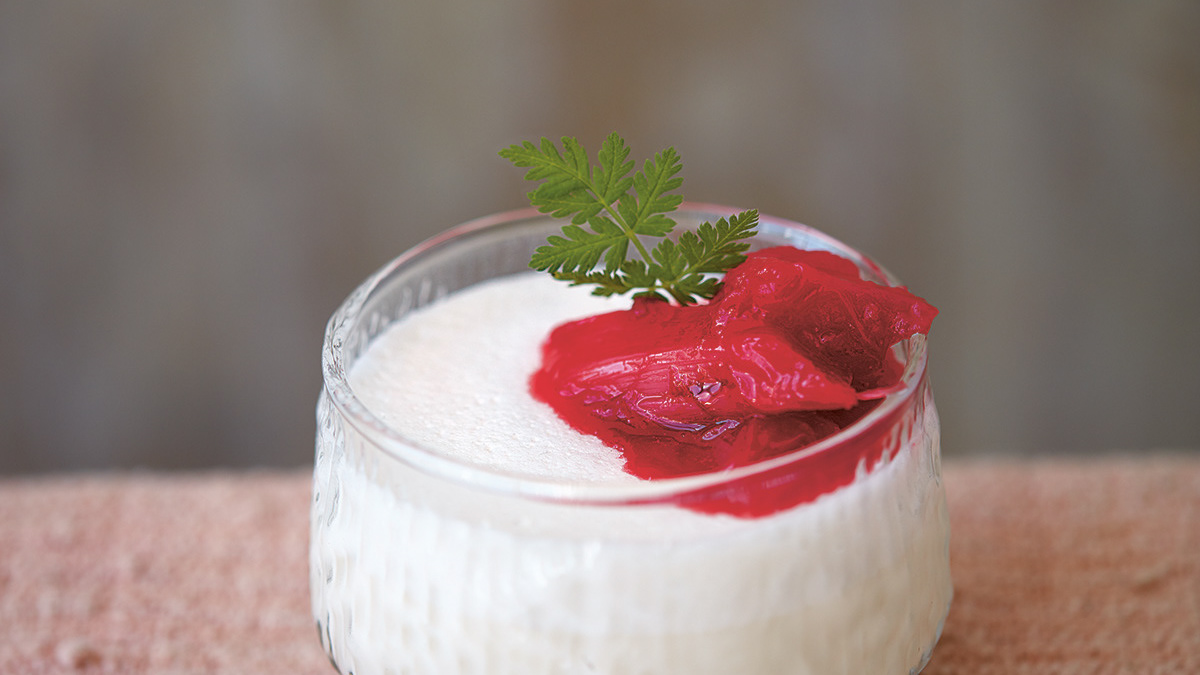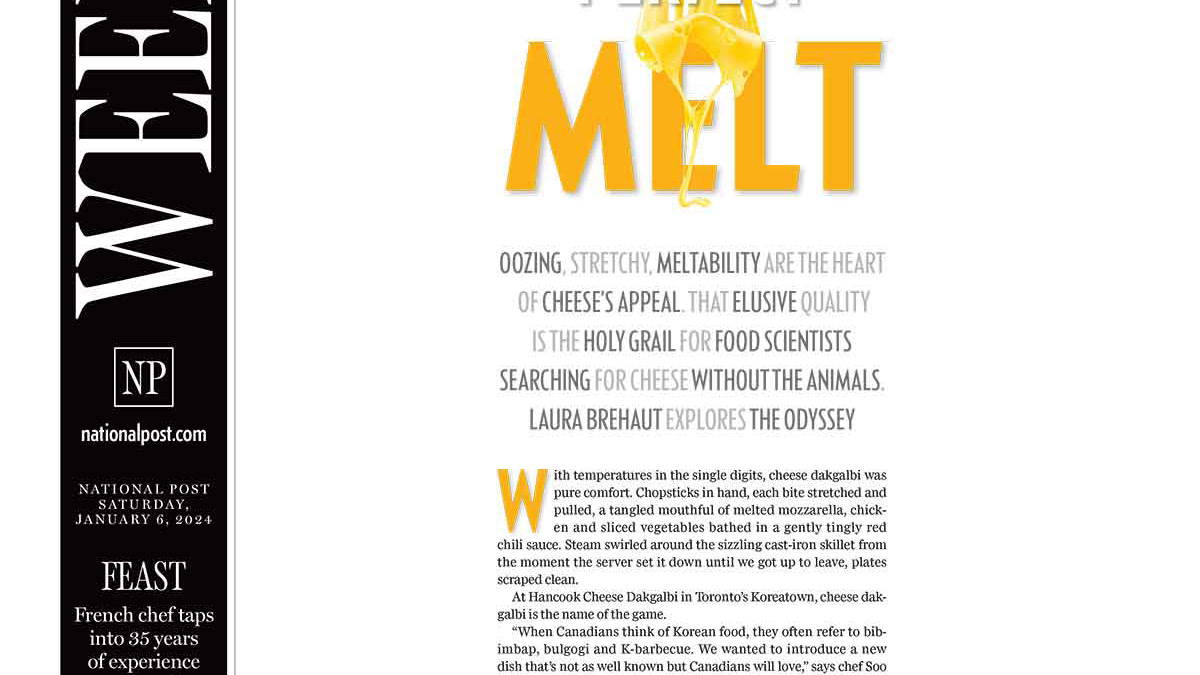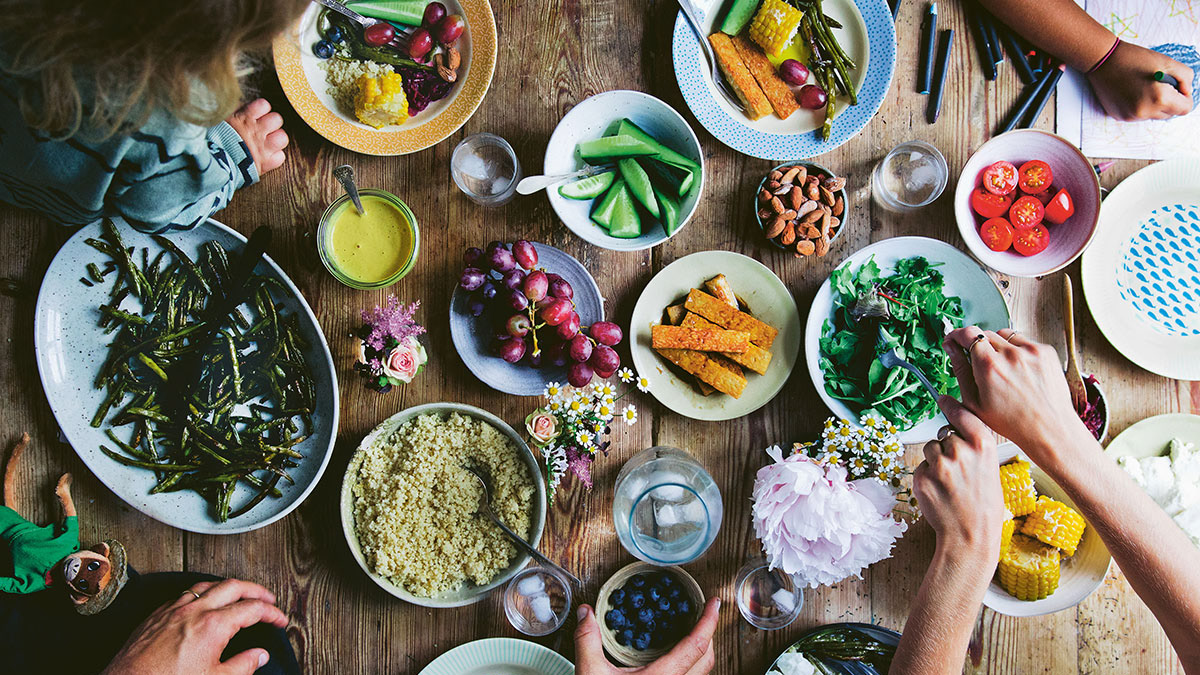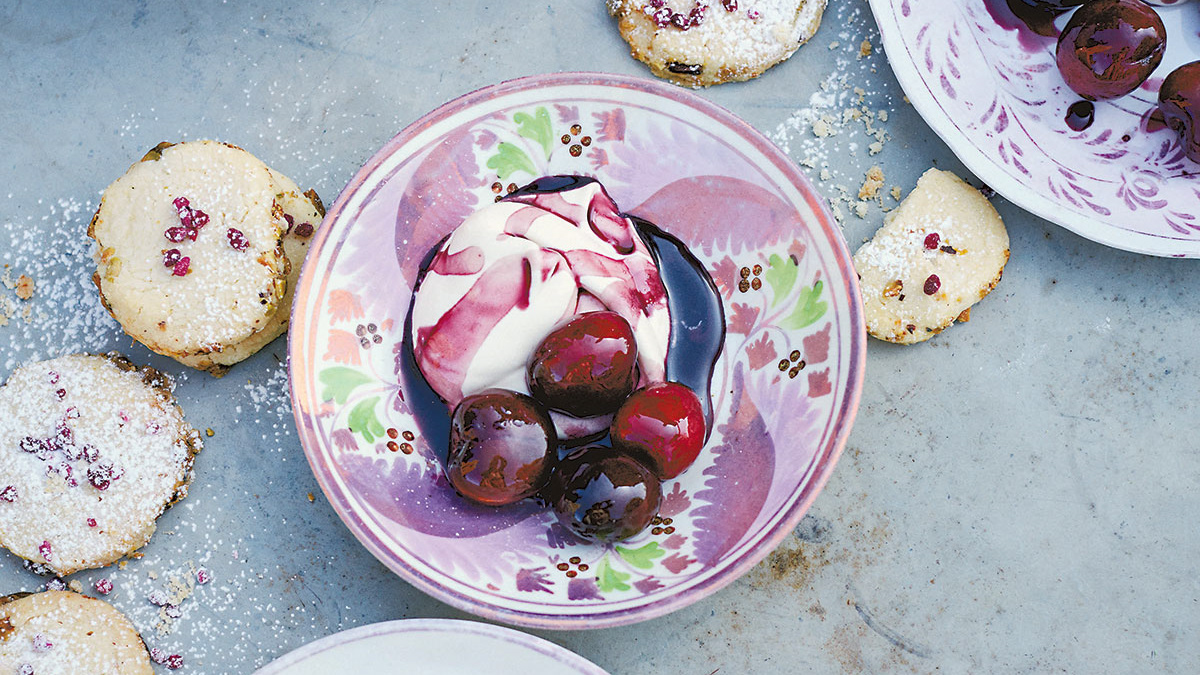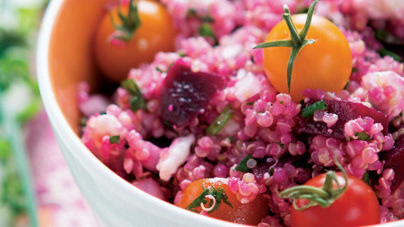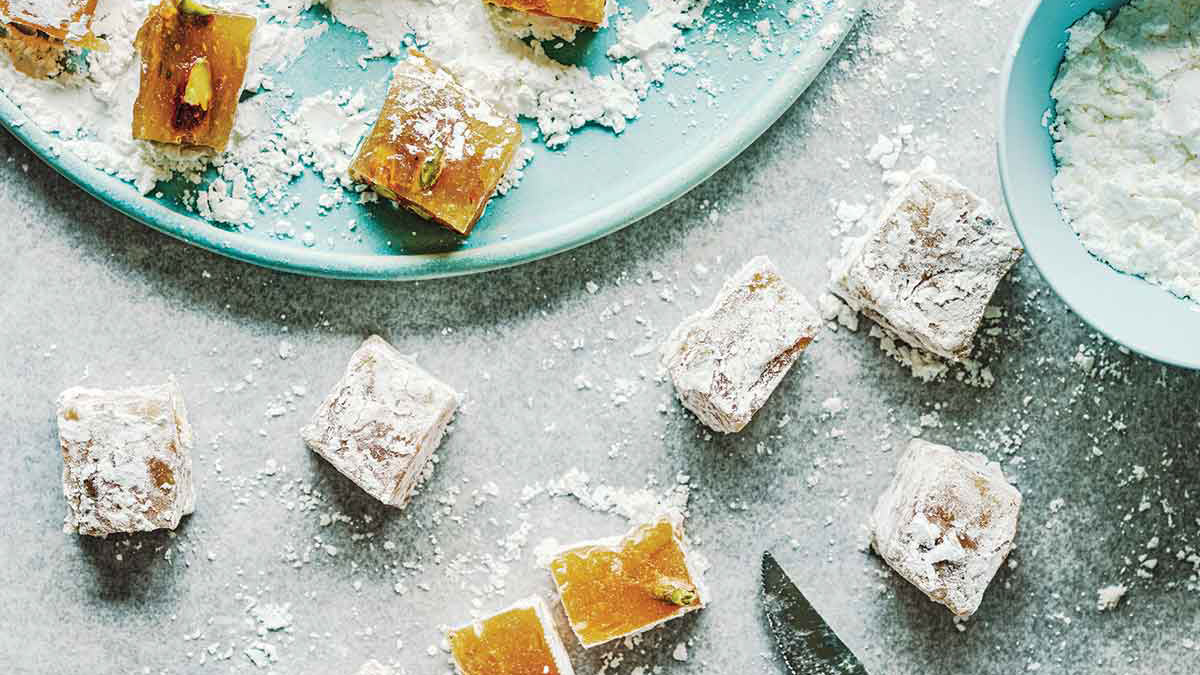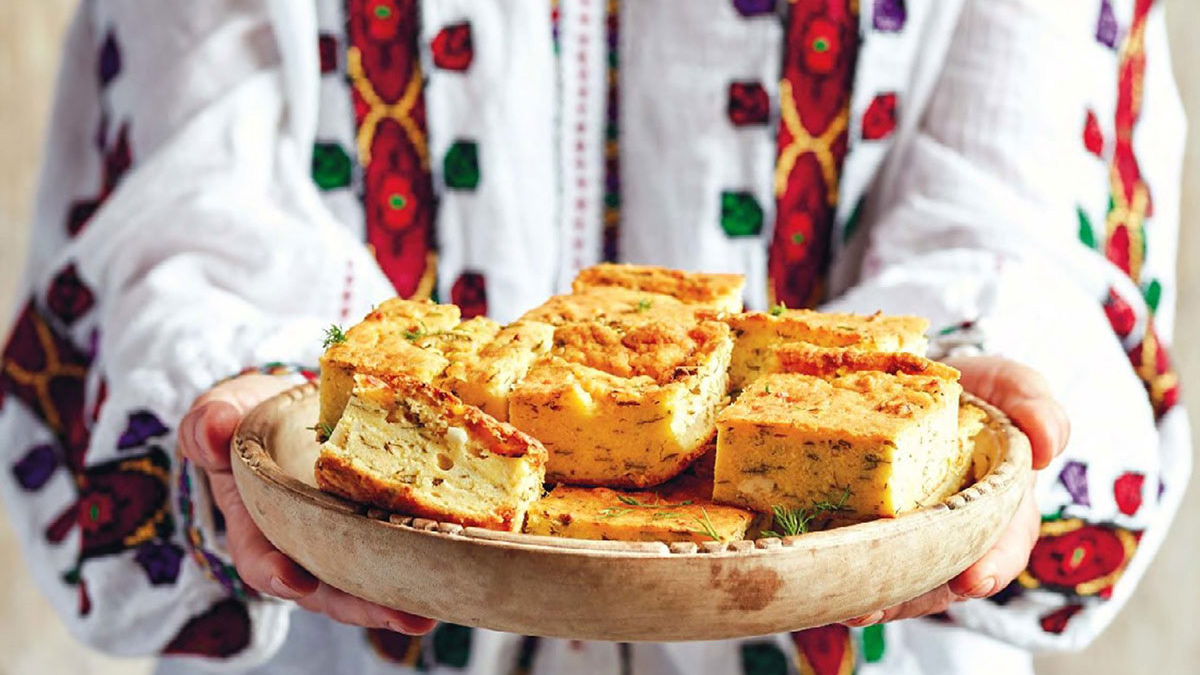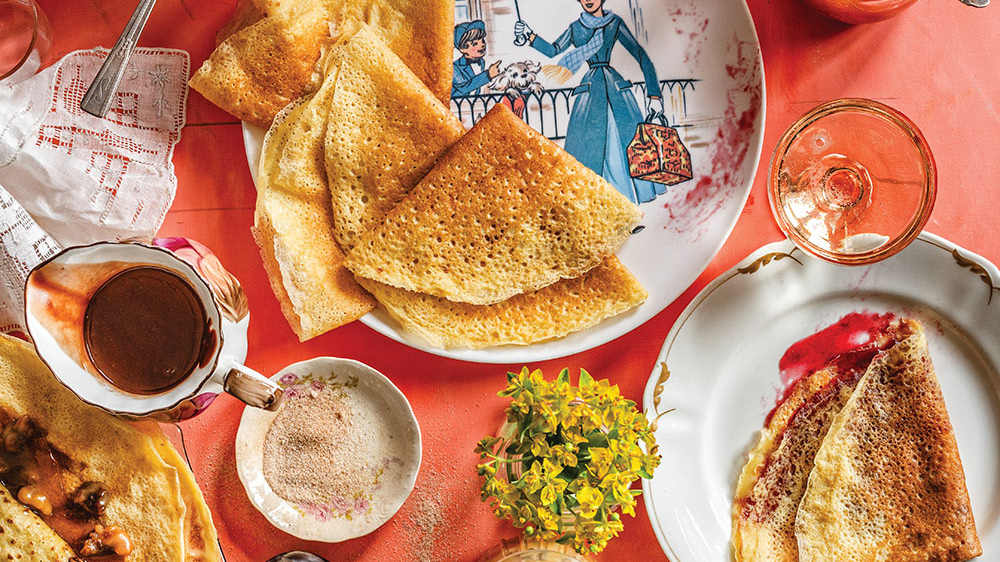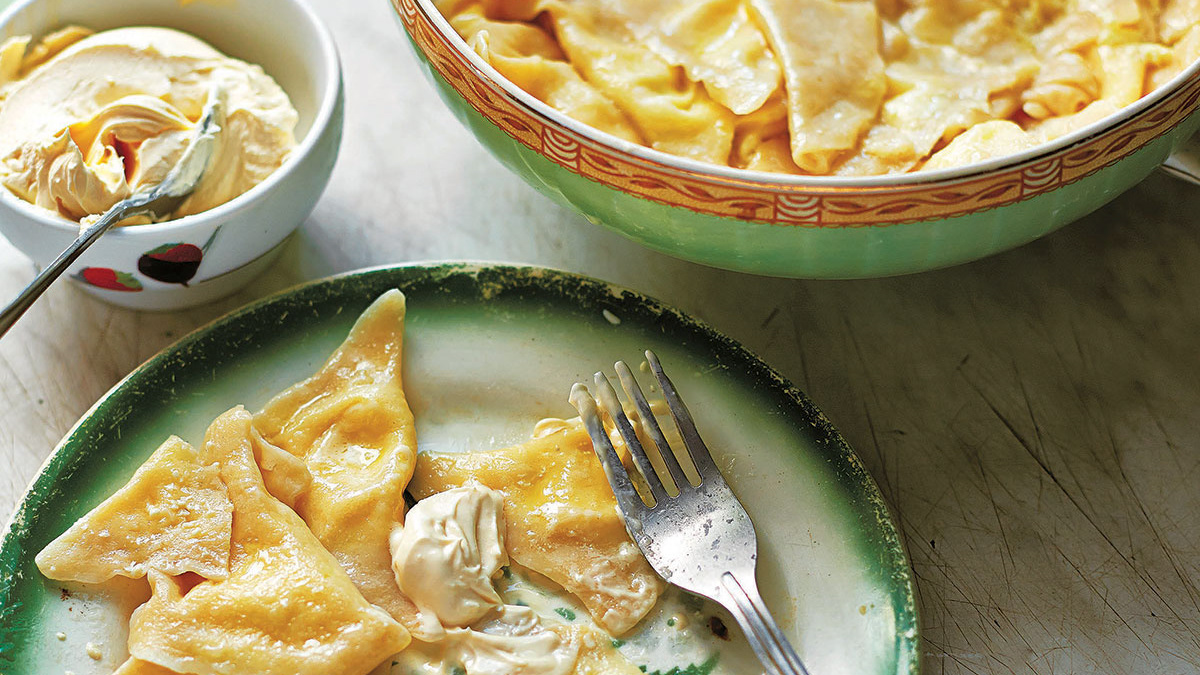PHOTO: Christopher Lewis/for Postmedia News; Barman Michael Webster is pictured mixing the Older Flame cocktail at Toronto’s Bar Isabel.
Laura Brehaut/Postmedia News
Originally published on October 24, 2013; canada.com
Originally published on October 24, 2013; canada.com
Whole Fish Ceviche, Smoked Sweetbreads, Morcilla and Brioche, Chips and Boquerone – chef Grant van Gameren has crafted dishes at Toronto’s Bar Isabel to be approachable, yet impressive with bold flavours and impeccable presentation.
Since the restaurant opened in Little Italy on March 22, 2013, van Gameren and his team have been serving Spanish-inspired fare accompanied by barman Michael Webster’s craft cocktails from 6 p.m. to 2 a.m., seven days a week. In seven months, Bar Isabel has garnered many a rave review, and was named Canada’s Best New Restaurant 2013 by Air Canada’s enRoute magazine.
Van Gameren’s nose-to-tail cooking at The Black Hoof was credited for setting off a charcuterie trend, not just in Toronto but across the country. After leaving the Hoof partnership in 2011, he joined Max Rimaldi’s Italian restaurant Enoteca Sociale, and then proceeded to eat his way through Italy, Spain, France and Denmark for two months. Upon returning to Toronto, he partnered with Rimaldi on what would become Bar Isabel. What van Gameren experienced in Spain stayed with him; namely the conviviality and the restraint exercised in cooking.
He points to Quimet y Quimet in Barcelona as an example of one of the most memorably perfect meals he had in Spain. “There are two people behind the bar and they’re just opening cans; Spain is known for their canned seafood,” van Gameren says. “There was no cooking involved. They had fish, foie gras and there was nowhere to sit. It was such a casual, convivial atmosphere, and it was affordable and there was alcohol everywhere.”
In terms of the restraint aspect, he explains that many chefs try to put their whole personality on each individual dish. What he learned in Spain is that it’s really about the entire meal and the progression of it. “Food is food. Food is sometimes a little bit too precious and that’s what I mean by restraint. Just being able to say let’s not look at this [simple] dish as if it’s not good enough or not cool enough,” van Gameren says. “Let’s look at the whole enjoyment of the meal from start to finish, and the progression of dishes and eating. We’re constantly trying to have dishes hit the table throughout your meal to keep your attention and keep it exciting.”
Van Gameren emphasizes that the same approach is taken with the cocktails, crafted by barman Michael Webster. Every effort is taken to create precise, balanced cocktails that rely on quality ingredients and quality spirits. “With the food and the cocktails we try to be unique and add our own twists to it,” van Gameren says. “That’s kind of where it gels together and probably [exhibits] the most inspiration of Spain – just from restraint and simplicity, and relying on good ingredients.”
Michael Webster, formerly of Momofuku and The Drake Hotel, has created a cocktail list that includes the house signature Isabel Fashioned – bourbon, bacon sugar – and “We Choose Yer Own Adventure” where the bartender talks with the guest and crafts a cocktail specifically for them. “We usually write [the recipe] down in the book and put the guest’s name on it so that when they come in we can just look at the recipe and re-create it,” Webster says. “That adds a very personable element to the space.”
The classic and house cocktails work with the menu, and Webster challenges the commonly held assumption that cocktails don’t pair well with food. “I don’t’ think as a city Toronto is quite there in understanding that a lot of cocktails do pair well with food. It’s still a very wine-focused city.” Webster says. He often makes cocktail recommendations based on the dishes guests have ordered, and the average number of craft cocktails ordered at Bar Isabel exceeds any other venue he has worked at.
Webster, along with chef de cuisine Brandon Olsen (formerly of The Black Hoof) and general manager Guy Rawlings (Bellwoods Brewery, Bar Volo) are key members of the 25-30 person staff. “They really believe in what we’re doing here. It’s not just a job; they’re all genuinely very excited to be a part of this. To have a little bit of responsibility for that definitely is super rewarding for me but without all of them, it wouldn’t be possible,” van Gameren says. “It’s just nice to have a healthy and exciting workplace even [seven] months in.”
Van Gameren recalls an email he received, asking if Webster was an owner. He took this as a great compliment; a sign of empowered staff that are as invested as possible in the business. “People do think that I’m an owner,” Webster adds. “It’s just because there are a lot of people that work here that are very confident, and it’s not hard to be confident with what’s coming out of the kitchen. The staff in the back, they’re militant and they’re precise. They’re like ninjas. I’ve never worked with a kitchen that’s more dedicated to perfection every time; I think that energy quickly stems to the front of house.”
Webster recalls how everyone pitched in to get the space ready before opening; servers and kitchen staff were sanding and helping lay tiles well into the wee hours of the morning. Van Gameren worked with friend and designer Marx Kruis on the interior of Bar Isabel; the custom cherrywood bar and 10,000 lbs. of concrete floor tiles made in Mexico.
“When you go to Europe, you feel the age on everything back when there was a true kind of tradesman working on spaces. That’s something we really wanted to bring here,” van Gameren says. “The original design was completely different. It was only in the last month when everything really started to come together – where the room felt much different.” The intended name, Crown Cooks, just didn’t seem to fit with the look and feel of the finished space; feminine and sexy. “That’s why you don’t name a book before you’ve written it,” van Gameren adds.
OLDER FLAME
Michael Webster’s Older Flame cocktail is a take on the Old Flame, which was on the original Bar Isabel menu. Webster uses a dried fruit-infused gin, which includes mangoes, apricots, raspberries, blueberries and some rooibos tea for colour. Webster points out that many people have an aversion to egg whites because they can give off an undesirable odour at room temperature, which doesn’t affect the flavour profile of the drink. “We finish it with a Chartreuse flame; basically the proteins try to come back together so if you ‘brûlée’ the top, it seals in the aroma,” he says. “People see the cocktail come up on the bar then you do a little flame: ‘What the hell is that?’ It looks really pretty.”
2 oz dried tropical fruit-infused gin (method follows)
1 oz fresh pressed lemon juice
0.5 oz 1-1 simple syrup
1 oz egg white
1 oz fresh pressed lemon juice
0.5 oz 1-1 simple syrup
1 oz egg white
1. Dry shake all ingredients in a cocktail shaker, add ice, shake again, and double strain into a coupette glass.
2. Finish with a Misto*-sprayed Green Chartreuse flame.
2. Finish with a Misto*-sprayed Green Chartreuse flame.
*A Misto is an olive oil mister/sprayer that is also a bartender’s tool. In this case, the Misto is filled with Green Chartreuse and, while holding a lighter in between the nozzle and the cocktail, sprayed on the surface of the cocktail.
TROPICAL FRUIT-INFUSED GIN
Webster gets dried tropical fruit from markets, independent grocers, and tea shops, which he finds are usually “the best and cheapest in the end.”
1. You'll need 5 heaping tablespoons of dried fruit for a 1.14 L bottle, or 3.5-4 tablespoons for a 750 ml bottle). Using a large mason jar or other container, add the dried fruit and gin and taste for desired strength and flavour every couple of hours after agitating slightly.
2. Once the desired flavour profile has been achieved, strain through cheesecloth squeezing every last drop from the soaked fruit.
3. Store the mixture in a labelled bottle.
2. Once the desired flavour profile has been achieved, strain through cheesecloth squeezing every last drop from the soaked fruit.
3. Store the mixture in a labelled bottle.
